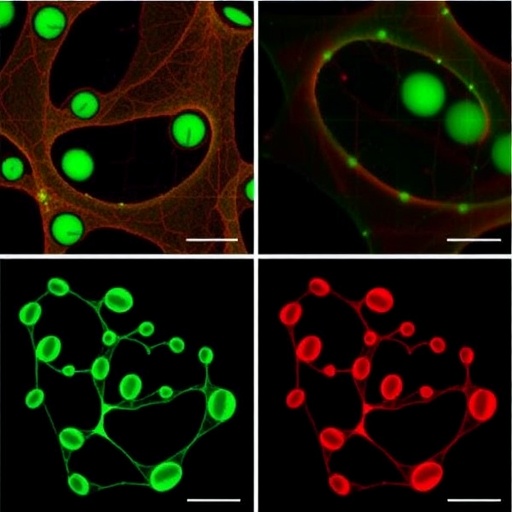In the relentless quest to harness the immune system’s power to combat cancer, researchers are increasingly turning their attention to innate immune cells—a class of immune warriors historically overshadowed by their adaptive immune counterparts. Innate immune cells such as natural killer (NK) cells, macrophages, and γδ T cells have emerged as formidable candidates for next-generation cancer immunotherapy. Unlike conventional T cells that require prior antigen sensitization to mount a targeted attack, innate immune cells exhibit intrinsic antitumor activity, rapid immune activation, and the capability to recognize a broad spectrum of tumor types. This recent surge of interest marks a paradigm shift, promising a new frontier in which the immune system’s innate arsenal is expertly engineered to subdue malignancies with enhanced efficacy and safety.
Macrophages, the key phagocytic cells of the innate immune system, play an equally critical but distinctly different role in tumor surveillance and elimination. Their versatility allows them to engulf cancer cells, present tumor antigens, and orchestrate broader immune responses. Yet, within tumors, macrophages often become polarized into protumoral phenotypes, facilitating tumor progression and immune evasion. The challenge lies in reprogramming these tumor-associated macrophages (TAMs) from a suppressive, tumor-supportive state to a tumoricidal, inflammatory mode. Innovative engineering approaches, such as chimeric antigen receptor (CAR) technology adapted to macrophages and modulation of their signaling pathways, aim to unlock their potential as dynamic agents of cancer eradication.
.adsslot_6ZlP9oURVB{ width:728px !important; height:90px !important; }
@media (max-width:1199px) { .adsslot_6ZlP9oURVB{ width:468px !important; height:60px !important; } }
@media (max-width:767px) { .adsslot_6ZlP9oURVB{ width:320px !important; height:50px !important; } }
ADVERTISEMENT
γδ T cells represent a fascinating hybrid within the immune landscape, straddling innate and adaptive immunity with their unique T cell receptor (TCR) configuration. Unlike αβ T cells, γδ T cells recognize stress-induced ligands and conserved molecular patterns in an MHC-unrestricted manner, enabling them to respond rapidly to malignant transformation. This ability, coupled with their tissue-homing properties and potent cytotoxicity, situates γδ T cells as promising effectors for cancer immunotherapy. However, the rarity and functional heterogeneity of γδ T cells pose significant barriers to their therapeutic exploitation. Cutting-edge methods leveraging gene editing, expansion protocols, and synthetic receptor constructs seek to amplify their antitumor properties and overcome tumor-induced immunosuppression.
The confluence of advanced genetic engineering and immunology has propelled the field toward the development of “designer” innate immune cells equipped with precise molecular tools to enhance their antitumor efficacy. These include CRISPR-based editing to disrupt inhibitory checkpoint molecules, insertion of CAR constructs tailored for innate receptors, and cytokine armoring to bolster cell persistence and function under immunosuppressive conditions. The fine-tuning of signaling domains within engineered receptors affords control over effector cell activation thresholds, thereby improving safety profiles by mitigating off-tumor cytotoxicity. Such innovations elevate the therapeutic promise of innate immune cell-based therapies beyond their natural capabilities.
Nevertheless, translating these engineering feats from bench to bedside presents formidable challenges. Innate immune cells exhibit unique biological behaviors that complicate their ex vivo expansion and genetic modification compared to conventional T cells. Protocols must be meticulously optimized to preserve functionality and phenotype. Moreover, the immunosuppressive milieu within solid tumors, replete with inhibitory cytokines, metabolic stressors, and regulatory myeloid cells, blunt innate immune cell activity. Combining cell engineering with strategies to remodel or circumvent the tumor microenvironment (TME) is an area of intense investigation, including the use of checkpoint inhibitors, metabolic modulators, and targeted therapeutics.
Preclinical studies have provided compelling evidence of the potential for engineered innate immune cells to mediate robust antitumor responses across multiple cancer models. For instance, CAR-NK cells engineered to recognize tumor-associated antigens have demonstrated potent cytotoxicity and tumor regression in hematologic and solid malignancies. Similarly, macrophages expressing CARs or reprogrammed to secrete pro-inflammatory cytokines have shown efficacy in preclinical tumor eradication models. γδ T cell therapies, fortified by ex vivo expansion and receptor engineering, have exhibited promising cytolytic activity and persistence. These results underscore the functional plasticity of innate immune cells and their amenability to sophisticated modifications.
Despite progress, many obstacles remain on the pathway to routine clinical integration. Manufacturing complexities, including achieving scalable, GMP-compliant production of engineered innate immune cells, represent a significant bottleneck. The heterogeneity in patient tumors and immune environments necessitates personalized approaches or universal “off-the-shelf” cell products with broad applicability. Moreover, the long-term safety and potential for adverse events, such as cytokine release syndrome or on-target off-tumor toxicity, require rigorous monitoring and mitigation strategies. Addressing these multifaceted issues demands concerted interdisciplinary efforts.
Looking forward, the fusion of synthetic biology with innate immune engineering promises transformative advances. Customizable, modular receptor platforms that can be rapidly adapted to emerging tumor antigens and resistance mechanisms will enable more flexible and durable therapies. The integration of biosensors and logic-gated circuits within engineered cells may permit nuanced control over therapeutic activity, reducing unwanted side effects. Furthermore, combining innate immune cell therapies with conventional treatments, immune checkpoint inhibitors, or microbiome modulation could enhance efficacy through multifactorial synergy.
The exploration of innate immune cells in cancer immunotherapy also sheds light on fundamental immune biology, revealing mechanisms of tumor recognition, immune evasion, and tissue-specific immunity. This expanding knowledge base informs the design of next-generation cell therapies and identifies novel molecular targets. As scientists and clinicians deepen their understanding of innate cell ontogeny and plasticity, the boundaries of immunotherapy will continue to extend beyond current paradigms.
In sum, the engineering of innate immune cells stands at the forefront of a burgeoning field that holds immense promise for revolutionizing cancer treatment. These cells’ inherent properties, combined with state-of-the-art genetic and cellular engineering technologies, present a formidable therapeutic platform capable of overcoming limitations of current adaptive immune cell therapies. Although challenges persist, ongoing preclinical and clinical developments provide a roadmap toward effective, safe, and broadly applicable innate immune cell-based immunotherapies.
By leveraging innate immune cells’ unique qualities, researchers are crafting a future where rapid, potent, and safe anticancer responses are achievable without the constraint of prior antigen sensitization. The convergence of immunology, molecular engineering, and clinical oncology propels this endeavor toward realizing the full potential of innate immunity in the fight against cancer. As this exciting frontier unfolds, it holds the promise not only to enhance patient outcomes but also to illuminate new horizons in immunotherapy innovation.
Subject of Research: Engineering innate immune cells for enhanced cancer immunotherapy efficacy
Article Title: Engineering innate immune cells for cancer immunotherapy
Article References: Tarannum, M., Ding, X., Barisa, M. et al. Engineering innate immune cells for cancer immunotherapy. Nat Biotechnol 43, 516–533 (2025). https://doi.org/10.1038/s41587-025-02629-5
Image Credits: AI Generated
DOI: https://doi.org/10.1038/s41587-025-02629-5
Tags: adoptive cell therapy strategiesbreakthroughs in innate immune cell researchcancer immunotherapy advancementsengineering natural killer cellsenhancing safety in cancer treatmentimmune system modulation for malignancyinnate immune cells in cancer therapymacrophages in immunotherapynext-generation cancer treatmentsrapid immune response in cancertargeting tumor cells with immune cellsγδ T cells for cancer treatment





